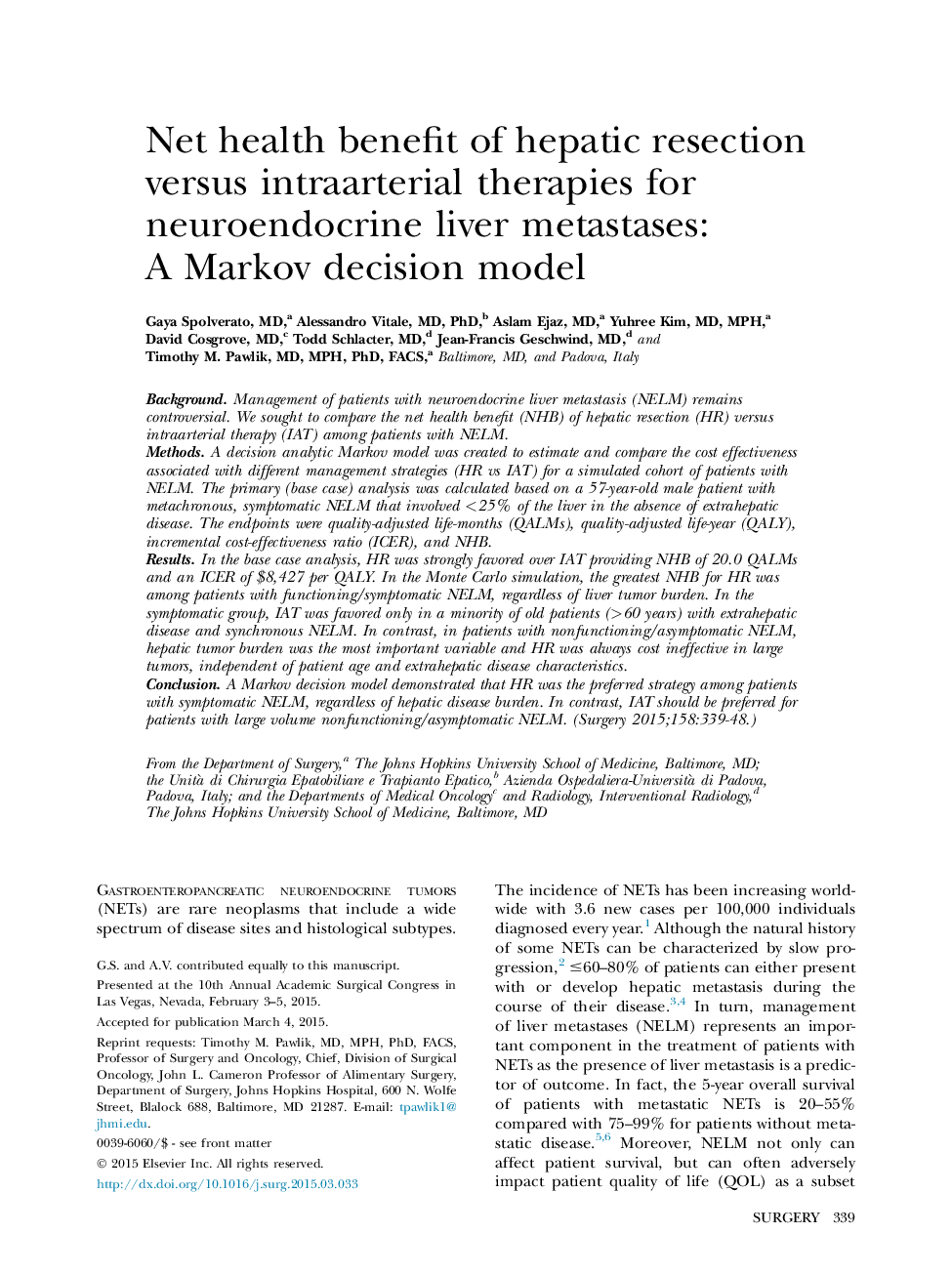| Article ID | Journal | Published Year | Pages | File Type |
|---|---|---|---|---|
| 4307000 | Surgery | 2015 | 10 Pages |
BackgroundManagement of patients with neuroendocrine liver metastasis (NELM) remains controversial. We sought to compare the net health benefit (NHB) of hepatic resection (HR) versus intraarterial therapy (IAT) among patients with NELM.MethodsA decision analytic Markov model was created to estimate and compare the cost effectiveness associated with different management strategies (HR vs IAT) for a simulated cohort of patients with NELM. The primary (base case) analysis was calculated based on a 57-year-old male patient with metachronous, symptomatic NELM that involved <25% of the liver in the absence of extrahepatic disease. The endpoints were quality-adjusted life-months (QALMs), quality-adjusted life-year (QALY), incremental cost-effectiveness ratio (ICER), and NHB.ResultsIn the base case analysis, HR was strongly favored over IAT providing NHB of 20.0 QALMs and an ICER of $8,427 per QALY. In the Monte Carlo simulation, the greatest NHB for HR was among patients with functioning/symptomatic NELM, regardless of liver tumor burden. In the symptomatic group, IAT was favored only in a minority of old patients (>60 years) with extrahepatic disease and synchronous NELM. In contrast, in patients with nonfunctioning/asymptomatic NELM, hepatic tumor burden was the most important variable and HR was always cost ineffective in large tumors, independent of patient age and extrahepatic disease characteristics.ConclusionA Markov decision model demonstrated that HR was the preferred strategy among patients with symptomatic NELM, regardless of hepatic disease burden. In contrast, IAT should be preferred for patients with large volume nonfunctioning/asymptomatic NELM.
